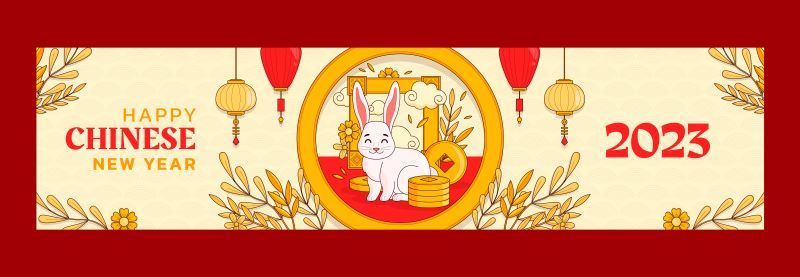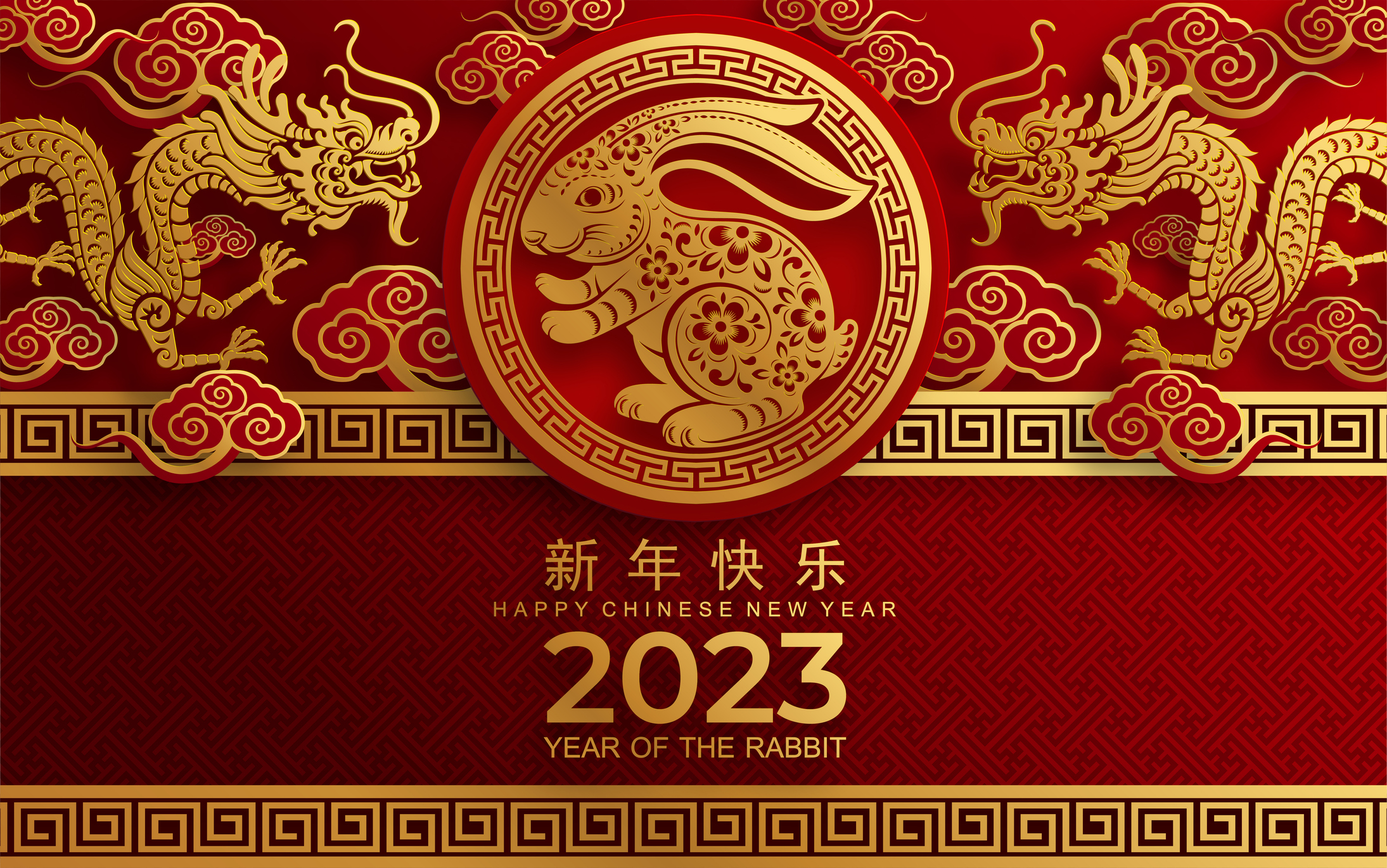Find out more about The Open University's Language courses and qualifications.
According to the Chinese zodiac, 2023 is the Year of the Rabbit, starting from January 22nd, 2023 (Chinese New Year's Day), and ending on February 9th, 2024. The sign of the rabbit is a symbol of longevity, mercy, elegance, peace, and prosperity in Chinese culture.
The rabbit is a tame and tender animal, and swift in movement. People born in the Year of the Rabbit usually have soft and tender personality traits. They keep a modest attitude and maintain a pleasant relationship to people around them. They will not be irritated easily, and they also avoid quarrels as much as possible.
After a hard winter in Britain, we have many reasons to expect a wonderful year ahead.

Let’s learn some common Chinese New Year’s greetings
The most frequently used new year's greetings are:
新年快乐 (xīn
nián kuài lè)
新年好(xīn
nián hǎo)
恭喜发财 (gōng xǐ fā cái)
The first two expressions mean 'Happy New Year' whilst the last one means ‘wishing you a Prosperous New Year' and it is mostly used in Cantonese speaking communities and in business circles.
If you want to be more specific and say ‘Happy Year of the Rabbit’, you need to say:
兔年快乐!tù nián
kuài lè!
Here is how the character for ‘Rabbit; (兔) is written (a total of 8 strokes and notice the direction in which each stroke is made).
Clever pun and some common proverbs that contain 兔 tù: (rabbit)
To welcome the coming of the new year, there are many witty, positive and creative Chinese New Year greetings.
As many people in the world now speak both Chinese and English, the two languages are mingled to create what is known as ‘translanguaging’ , i.e. making use of one’s existing language(s) and knowledge to convey the meaning. On Chinese social media, the following has gone viral:
Happy New Year 兔 you!
The character in the middle of the greeting means ‘rabbit’ and is pronounce ‘tù’ which sounds similar to ‘to’, which makes a perfect and creative ‘Happy New Year to/tù you’ (i.e. Happy Chinese New Year of the Rabbit to you) to those who speak both languages.
As many words in Chinese share the same pronunciation, plays with words and pronunciation are very common. Here is one which has become popular on Chinese social media recently:
‘兔’飞猛进 tú fēi měng jìn
Lit. rabbit fly fiece advance
This pun is created by two words sharing similar pronunciation as both the first character 兔 (4th tone, rabbit) above and the first character 突 tū (1st tone, sudden, out of nowhere) as in the following well-known four-character proverb which is used to predict fast-growing economic development:
突飞猛进 tū fēi měng jìn
Lit. sudden fly and fiece advance (advance by leaps and bounds)
守株待兔 shǒu zhū dài tù
Lit. wait by plant anticipate rabbit (wait for good things to drop into one’s lap without making an effort)
There are some interesting Chinese folk tales concerning the rabbit:
龟兔赛跑 guī tù sài pǎo
Lit. tortoise rabbit race run (The tortoise and the hare race)
玉兔 yù tù
Lit. jade rabbit
In Chinese folklore, the rabbit is often portrayed as a companion of the Moon goddess Chang'e, constantly pounding the elixir of life for her so it symbolises the Moon in Chinese culture.
Celebrate the new year by dipping into some of our fantastic resources on China and Chinese. In addition to those free resources, you may also wish to have look at our short course in Chinese business culture, which you can start at any time of the year.
If you’d like to find out about the latest news, public talks and courses relating to Chinese language and culture at The Open University, please visit the Online Confucius Institute.




Rate and Review
Rate this audio
Review this audio
Log into OpenLearn to leave reviews and join in the conversation.
Audio reviews